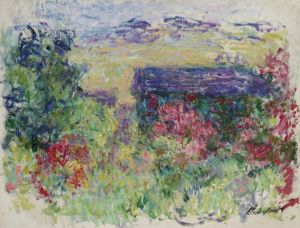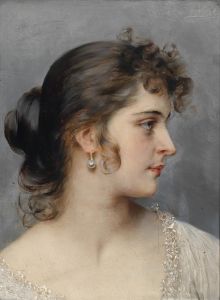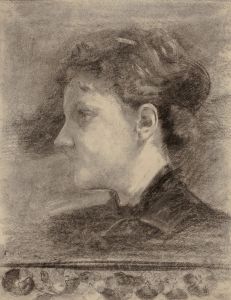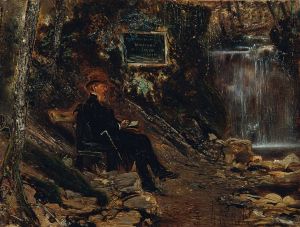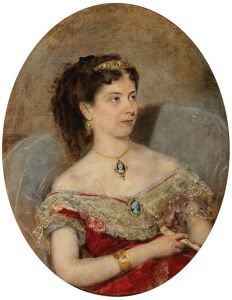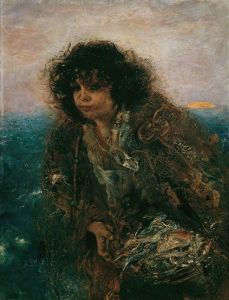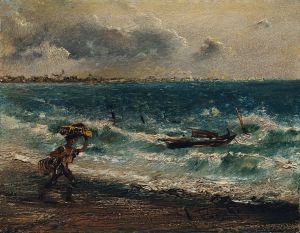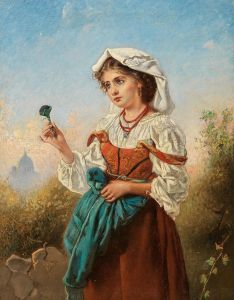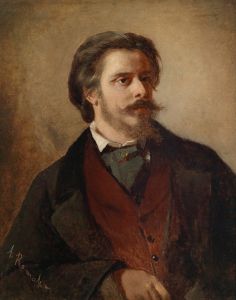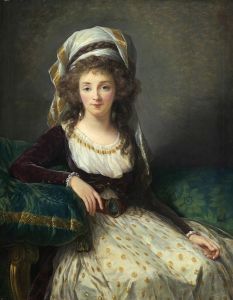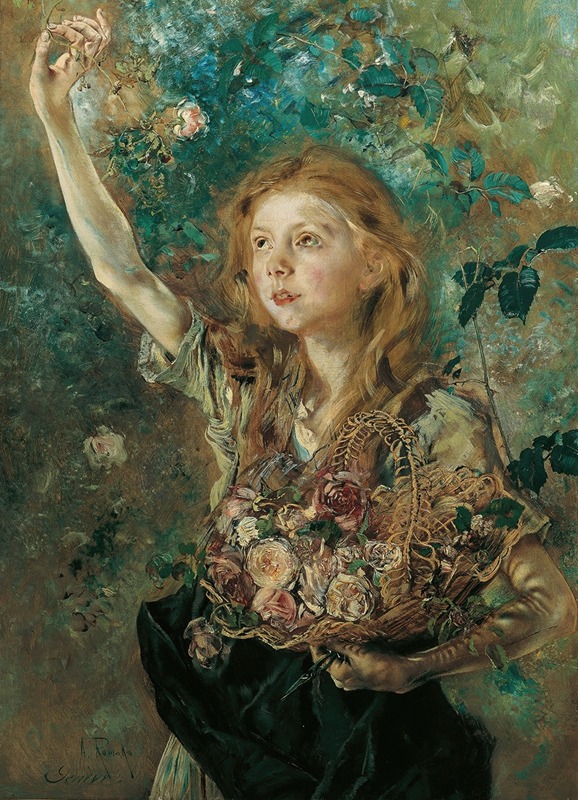
Die Rosenpflückerin
A hand-painted replica of Anton Romako’s masterpiece Die Rosenpflückerin, meticulously crafted by professional artists to capture the true essence of the original. Each piece is created with museum-quality canvas and rare mineral pigments, carefully painted by experienced artists with delicate brushstrokes and rich, layered colors to perfectly recreate the texture of the original artwork. Unlike machine-printed reproductions, this hand-painted version brings the painting to life, infused with the artist’s emotions and skill in every stroke. Whether for personal collection or home decoration, it instantly elevates the artistic atmosphere of any space.
Anton Romako was an Austrian painter known for his unique style that bridged the gap between the academic traditions of the 19th century and the emerging modernist movements. One of his notable works is "Die Rosenpflückerin" (The Rose Picker), which exemplifies his distinctive approach to portraiture and genre painting.
"Die Rosenpflückerin" was created during a period when Romako was exploring themes of everyday life, often focusing on intimate and personal moments. This painting captures a young woman engaged in the simple yet evocative act of picking roses. The subject matter reflects Romako's interest in capturing the beauty and tranquility of ordinary activities, a theme that recurs throughout his oeuvre.
Romako's style in "Die Rosenpflückerin" is characterized by a delicate balance between realism and impressionistic tendencies. He employs a soft color palette, with gentle brushstrokes that convey the texture of the roses and the subtle play of light on the woman's figure. This approach allows Romako to create a sense of immediacy and intimacy, drawing the viewer into the scene.
The composition of the painting is carefully constructed to focus attention on the central figure. The young woman is depicted with a serene expression, her gaze directed towards the roses she is picking. This focus on the subject's expression and posture is typical of Romako's work, where he often sought to convey the inner life and emotions of his subjects through subtle visual cues.
Romako's technique in "Die Rosenpflückerin" also reflects his academic training, yet it is infused with a personal touch that sets his work apart from his contemporaries. He was known for his ability to blend traditional techniques with a more modern sensibility, which is evident in the way he captures the delicate interplay of light and shadow in this painting.
The historical context of Romako's work is significant, as he was active during a time of great change in the art world. The late 19th century saw the rise of Impressionism and other avant-garde movements that challenged the established norms of academic art. While Romako was not directly associated with these movements, his work demonstrates an awareness of these new artistic directions, particularly in his use of color and light.
"Die Rosenpflückerin" is a testament to Romako's skill as a painter and his ability to capture the essence of his subjects with sensitivity and nuance. The painting remains an important example of his contribution to the development of modern art in Austria, showcasing his unique ability to blend traditional and modern elements in a harmonious and compelling manner.
Overall, Anton Romako's "Die Rosenpflückerin" is a significant work that reflects the artist's mastery of technique and his innovative approach to genre painting. It stands as a testament to his artistic vision and his role in the transition from 19th-century academic art to the more expressive forms of the early 20th century.





